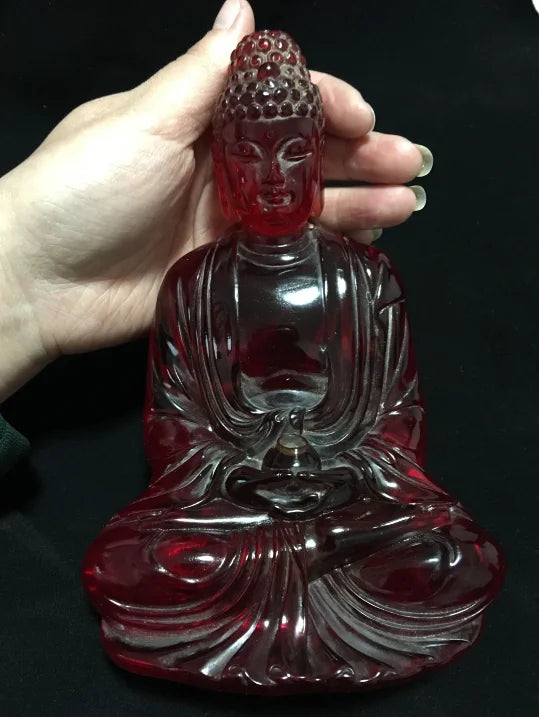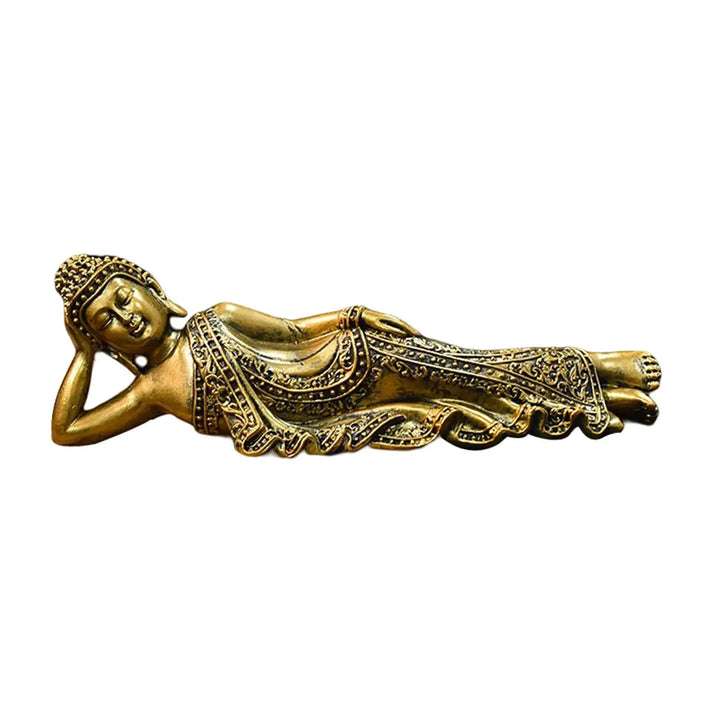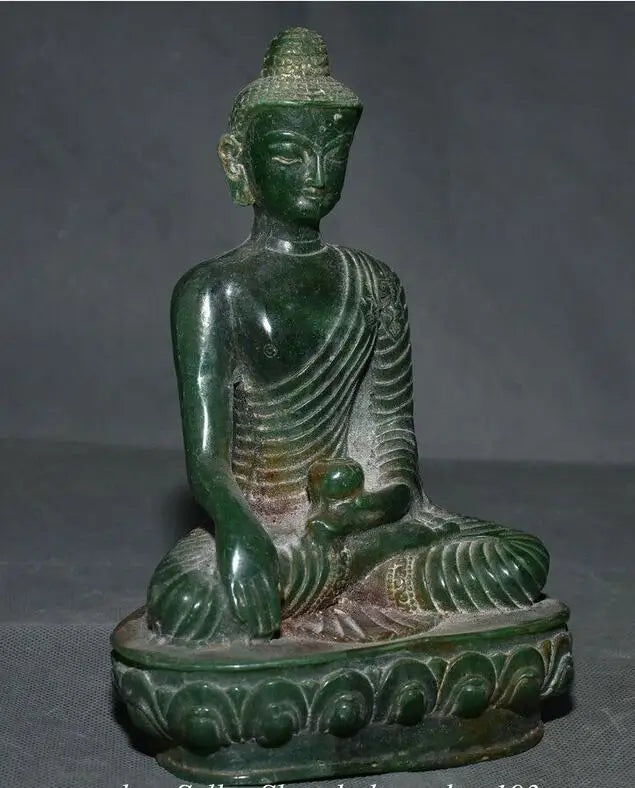Let's go deep into the rich symbolism and meanings behind Buddha figurines, a subject that captivates the interest of many across the globe.
Whether you're a practitioner of Buddhism, a collector of spiritual artifacts, or simply someone drawn to the serene and wise aura of these figures, understanding what they represent can deepen your appreciation for them.
This article aims to explore the various types of Buddha figurines, their historical context, symbolic significance, and the ways in which they can enrich our lives and spaces.
Table of Contents
- What's Special About Buddha Figurines?
- Historical Context and Origin
-
Types of Buddha Figurines and Their Meanings
- The Seated Buddha
- The Laughing Buddha
- The Reclining Buddha
- The Standing Buddha
- The Buddha Head
-
Symbolic Elements in Buddha Figurines
- Mudras: Gestures and Their Meanings
- The Lotus Flower
- The Robes and Their Significance
- How Buddha Figurines Can Enhance Your Space
- Choosing the Right Buddha Figurine for You
What's Special About Buddha Figurines?
Buddha figurines are not merely decorative items; they are rich with history, symbolism, and intention.
They serve as visual reminders of the teachings of Buddhism, encapsulating principles such as peace, enlightenment, and the pursuit of truth.
Beyond their spiritual significance, these figurines also play a role in enhancing the aesthetics and energy of living spaces, making them a beloved choice for both practitioners and admirers of Buddhism.
Historical Context and Origin
The tradition of creating Buddha figurines dates back to centuries after the historical Buddha, Siddhartha Gautama, achieved enlightenment and began sharing his insights.
Initially, Buddhism utilized symbols like the Dharmachakra, or "Wheel of Dharma," to represent the Buddha's teachings. The first anthropomorphic representations of the Buddha appeared in the 1st century CE in the Gandhara region of present-day Pakistan and Afghanistan, blending Hellenistic artistic influences with local traditions.
Types of Buddha Figurines and Their Meanings
The Seated Buddha
Typically found in a meditative posture or displaying a mudra (gesture), the seated Buddha symbolizes stability, calm, and meditation. The specific mudra used can signify different aspects of the Buddha's teachings, such as the Dhyana Mudra for meditation or the Bhumisparsha Mudra for calling the earth to witness his enlightenment.

A Stunning Red Amber Buddha statue.
The Laughing Buddha
Known as Budai in China, the Laughing Buddha is a figure of abundance, happiness, and contentment. Often depicted with a large belly and a jovial smile, this figurine is believed to bring good luck and fortune.

A Lucky Dragon Laughing Buddha Statue.
The Reclining Buddha
Representing the Buddha's final moments before entering Nirvana, the reclining Buddha symbolizes peace, detachment from worldly matters, and the completion of the spiritual journey.

A Vintage Style Reclining Buddha Figurine for Home and Office.
The Standing Buddha
Standing Buddha figurines are often seen with hands raised in various mudras, symbolizing protection, fearlessness, and blessing. They embody the Buddha's active and compassionate engagement with the world.
Buddha Head Statue
A Buddha Head Statue is usually preferred by people who want to focus on the symbolism associated with the face of Gautam Siddhartha. His face carries deep symbolism and depth that is positively soul-enriching.
Symbolic Elements in Buddha Figurines
Symbolic elements in Buddha figurines carry deep meanings and reflect the core principles of Buddhism. These elements are not just decorative; they serve as powerful reminders of the teachings and philosophy of the Buddha.
Let's delve deeper into the symbolism found in Buddha figurines to appreciate their significance and how they convey profound spiritual messages.
Mudras: Gestures and Their Meanings
Mudras, or hand gestures, are one of the most significant symbolic elements in Buddha figurines. Each gesture has a specific meaning, representing different aspects of the Buddha's life and teachings. Here are a few notable mudras:
- Dhyana Mudra: This gesture of meditation, where the hands are placed on the lap with the palms facing upwards, symbolizes the state of deep meditation and the attainment of spiritual perfection. It reflects the Buddha's serene and contemplative nature.
- Bhumisparsha Mudra: Known as the "earth-touching" gesture, it is depicted by the right hand reaching towards the ground. It symbolizes the moment of the Buddha's enlightenment under the Bodhi tree, calling the earth to witness his liberation from the cycle of rebirth.
- Abhaya Mudra: The gesture of fearlessness is shown by the Buddha with his right hand raised, palm facing outward. It represents protection, peace, and the dispelling of fear, embodying the Buddha's role as a protector.
- Vitarka Mudra: The gesture of teaching and intellectual argument, characterized by a circle formed by the thumb and index finger, signifies the transmission of the Buddha's teachings and the endless flow of energy.
The Lotus Flower
The lotus flower is a recurring symbol in Buddhist art, including Buddha figurines. It represents purity, enlightenment, and the ability to rise above the murkiness of life to achieve spiritual enlightenment.
The lotus is often depicted with the Buddha sitting or standing upon it, illustrating how the Buddha, like the lotus, rises from the darkness of ignorance into the light of awareness.

A Green Jade Buddha on a lotus flower.
The Robes and Their Significance
The simple and unadorned robes of the Buddha figurines symbolize the Buddha's renunciation of worldly life and his commitment to a spiritual path.
The robes, often depicted as draped in an elegant manner over the figurine, remind followers of the importance of simplicity, modesty, and the renunciation of materialistic desires.
They reflect the Buddha's teachings on non-attachment and the pursuit of a meaningful life focused on spiritual development.
The Urna and Ushnisha
- Urna: The urna, a circular dot or curl of hair between the eyebrows of Buddha figurines, symbolizes the third eye, which sees beyond the mundane to the divine. It represents the Buddha's wisdom and ability to see the true nature of reality.
- Ushnisha: The ushnisha, a protrusion on the top of the Buddha's head, signifies spiritual and intellectual prowess. It is a symbol of the Buddha's enlightenment and his transcendent knowledge.
The Alms Bowl
The alms bowl is a common attribute in Buddha figurines, particularly those depicting the historical Buddha. It symbolizes the Buddha's humble beginnings and his reliance on alms for sustenance during his ascetic life.
It also represents generosity, one of the key virtues in Buddhism, reminding practitioners of the importance of giving and sharing with others.
How Buddha Figurines Can Enhance Your Space
Incorporating Buddha figurines into your home or workspace can create a peaceful and contemplative environment.
They serve as reminders of the importance of mindfulness, compassion, and the pursuit of inner peace in our daily lives. Choosing a figurine that resonates with your personal aspirations can make it a powerful focal point for meditation and reflection.
Choosing the Right Buddha Figurine for You
When selecting a Buddha figurine, consider what aspect of the Buddha's teachings you wish to bring into your life. Whether it's the joy and abundance symbolized by the Laughing Buddha or the meditative peace of the Seated Buddha, let your intuition guide you towards a figurine that speaks to you on a personal level.
Parting Notes
Buddha figurines are more than just aesthetically pleasing objects; they are imbued with deep symbolic meaning and historical significance.
Understanding the various types of figurines and what they represent can enhance our appreciation of them and help us to incorporate their teachings into our lives.
Whether used as aids in spiritual practice or as decorative elements, these figurines remind us of the enduring wisdom of the Buddha's teachings.








